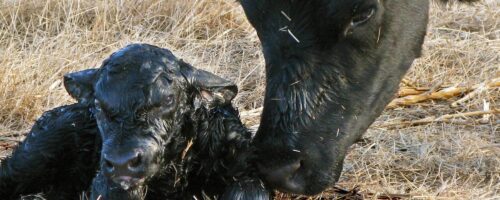All venison is not equal. Venison can be consistently excellent table fare, or, with poor handling and preparation, can be about the quality of a boot sole. Many people who do not like to eat venison had bad experiences with improperly handled or prepared meat. Many factors affect the quality of venison, including deer species, deer age, stress prior to harvest, field dressing, contamination of meat, cold storage temperature, excessive moisture during storage, aging of carcass, butchering and packaging.
To keep things simple, these comments focus on the meat of wild, free-ranging white-tailed deer and mule deer. Some of these details would be different for large deer species such as moose, elk and caribou or non-native deer such as fallow, axis and red deer.
Meat from mature bucks more than four years old that are harvested during rut sometimes can have a little off-flavor and be a little tougher than female deer and young bucks. Nevertheless, mature bucks are usually very edible when handled, aged and butchered properly. Genetics most likely impact tenderness of venison, because I have encountered some old does that were more tender than some young does. However, I do not know how a hunter can recognize a deer with the genetics for tenderness.
A clean, quick kill of an undisturbed deer probably provides the best-quality venison. Meat quality usually declines in animals that are stressed or run extensively immediately before death. A deer should be eviscerated (field dressed) immediately after death, but this can be postponed up to a couple hours during mild weather and even longer during cold weather. The combination of evisceration and the bullet or arrow wound usually adequately bleed a deerthere is no need to cut a dead deers throat. Also, contrary to popular belief, it is not necessary to remove the metatarsal glands because they do not affect the meat after death. However, avoid rubbing the glands on the meat and avoid handling the glands and then handling the meat without washing well.
Soon after evisceration, the carcass or quartered meat should be cooled and stored at 34-38 degrees Fahrenheit. The carcass is easiest to skin soon postmortem, but skinning can be postponed for a few days as long as the carcass is quickly and thoroughly cooled. Tenderness is generally improved when the carcass or quartered meat is aged at least a week at 34 to 38 F with good air circulation around any exposed meat. Air circulation around exposed meat causes its surface to drythe dry layer should be trimmed off during butchering. Tenderness continues to improve during the cold storage aging process until about 16 to 21 days. The meat that will be ground and the tenderloins do not need to be aged. Freezing should be avoided during the aging process because it inhibits aging and speeds spoilage after thawing. However, meat does not go bad when it freezes during the aging process. The meat should be kept clean and dry throughout field dressing, cold storage and aging processes. Soiling and excessive moisture increase the likelihood of spoilage.
After the aging process, fat, cartilage, bruised meat, dried outer meat and non-muscle material should be removed from the muscles using a sharp filet or boning knife while working on a clean, cool cutting surface. I believe fat is the most common source of off-flavor in venison. Several chemicals that cause off-flavor are stored in fat. Venison fat usually leaves an aftertaste or residue in the mouth and is less palatable than beef, pork or chicken fat. Cartilage, such as tendons, ligaments and fascia, are responsible for much of the toughness in meat.
For most of my venison recipes, I prefer to separate each muscle and cut slices or chunks across the grain of the muscle. The muscles from the tenderloins, back straps and hindquarters are the best choices for frying, grilling and roasting (these muscles are ranked in order of decreasing tenderness, but all are good quality). These muscles, as well as the neck, shoulder and flank muscles, can be used in other recipes such as stews, fajitas, chilies, smoked meats, sausages and hamburgers. Some recipes that work well with beef or pork may not work well with white-tailed or mule deer because these deer meats tend to be dry, lacking intramuscular marbling. Avoid undercooking and overcooking venison when frying, grilling, roasting, smoking or microwaving, because undercooked venison might provide a health risk, and overcooked venison becomes tough and dry.
Unless cooking the meat fresh, it should be quickly frozen after butchering. Meal-sized quantities of meat should be placed into plastic bags. Most of the air should be removed from the plastic bags before sealing. When the meat will be stored in the freezer for more than a few days, the plastic bags should be wrapped in freezer paper; the freezer paper should be sealed with tape; and the packages should be labeled appropriately. Meat prepared and stored in this manner maintains good quality for more than a year. Vacuum-sealed bags probably improve the storage process, and vacuum-sealed bags may not require a second layer of freezer paper.


Comment